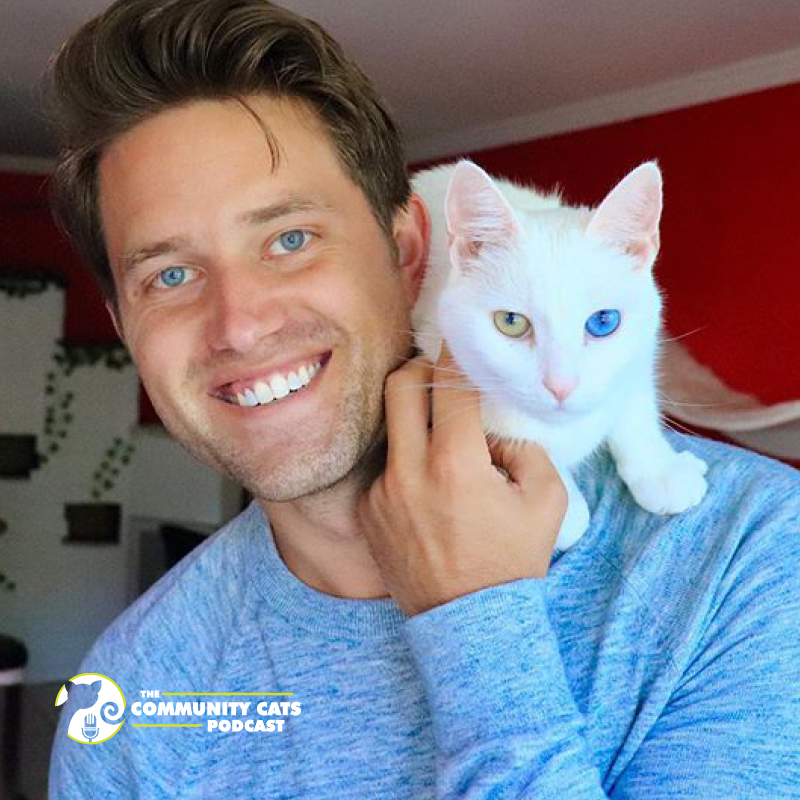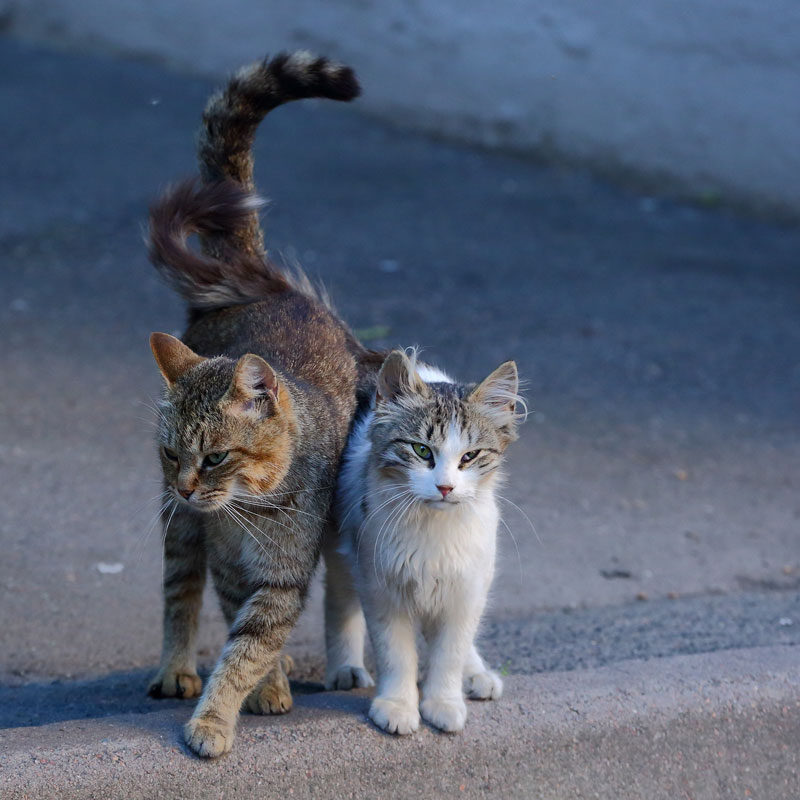
Allen Kamrava, Eusoh
January 19, 2021
Nathan the Cat Lady, Tabby Dates
January 26, 2021
Today’s guest post comes to us from Krista Beucler, Marketing & Communications Intern at Community Cats Podcast.
As cat lovers, we hate seeing stories about communities employing lethal removal techniques to combat feral cat populations. But it isn’t distressing only because we hate the idea of cats being hunted and killed. It’s distressing because we know these methods don’t work.
A recent trap and kill campaign was carried out on the New Caledonian island of Grande Terre, about 880 miles northeast of Brisbane, Australia. The campaign killed an estimated 44% of the population and was considered a success. Anyone who works in shelters knows that 44% isn’t going to cut it. Cats can reproduce five times a year and when colonies are removed from an area, that vacuum will just draw feral cats from other areas to move in. Now that there are fewer cats (but not zero cats), the new kittens born won’t have to compete for resources and therefore have a higher chance of survival. Despite the campaign’s killing an estimated 44% of the feral population, it was reported that, “Three months after the end of the culling campaign that eliminated 36 cats … no meaningful differences in the relative abundance and density of feral cats were observed in response to culling, whatever the indicator of population size considered.” The bottom line is that it won’t matter how many cats are killed if the cats that remain aren’t sterilized.
East Bay Regional Park District in Oakland, California recently faced criticism from the public and organizations such as Alley Cat Allies for its lethal practices and policies for dealing with feral cats. They have currently suspended such practices pending further review. The reason cited for killing feral cats in East Bay Regional Park District is protection of endangered species in the Martin Luther King Jr. Regional Shoreline. The Regional Shoreline is home to endangered species such as the Ridgway’s rail, the California black rail, the least tern, and the burrowing owl.
Of course, protection of these endangered species is of the utmost importance, but recent research suggests that it isn’t feral cats that pose the greatest threat to birds and other endangered species. It’s humans. Pollution and climate change, loss of habitat resulting in starvation and nesting ground shortages, and collisions with buildings and cars are the biggest threats to birds. It’s also important to note that feral cats are part of the ecosystem and have been for a very long time. Removing the cat population entirely (which lethal methods have so far failed to do, despite that being their goal), can cause spikes in rat, mouse, and rabbit populations. Rats then prey on birds while mice and rabbits devastate the vegetation, all leading to decimation of bird populations. Cats actually prefer to scavenge food, surviving on all the garbage that humans produce, and hunt burrowing mammals, only killing birds relatively infrequently.
It has also been suggested that of the birds that are being killed by cats, many are starving, leading to their being easier targets for cats. If humans were making a greater effort to protect their habitats, might those birds be healthier and better able to avoid being caught by a cat?
Trap-Neuter-Return (TNR) is really the only viable solution to successfully managing feral cat populations so that all species can live in balance. Not only will targeted sterilization of colonies stabilize their population, but it will also help remedy problem behaviors like spraying, fighting, and yowling that may bother neighbors. Vaccinating community cats also keeps the feral cats healthy so they aren’t spreading diseases to the humans or other animals in the area. Recent studies have shown that “Substantial and sustained reductions in community cat populations associated with trap–neuter–return (TNR) programs have been documented in a variety of locations, including in the northeastern, midwestern, and southeastern United States, as well as Australia.” TNR has also been shown to help reduce intake and euthanasia rates at shelters, many of which are struggling to cope with the number of animals coming into their care. Of course, because there is no legislation in the US to provide guidance on the management of community cats, the burden falls to shelters. More partnerships between shelters and city governments, like the recent Citywide Cat Program for Trap-Neuter-Return in Los Angeles, are needed to address the problem in an efficient and targeted way.
It seems to me that cats are the scapegoats blamed for the disappearance of birds and other species because humans are unwilling to form partnerships that support shelters, or to make changes to curb climate change and support real protections for these species.
 Originally from Colorado, Krista Beucler received a Bachelor of Arts in creative writing at the University of Mary Washington (UMW) in Virginia. She was the editor-in-chief for Issue 7.2 of the Rappahannock Review, the literary journal published by UMW. Krista’s creative work has been published in From Whispers to Roars literary magazine. She is spending COVID-19 at home with her cats.
Originally from Colorado, Krista Beucler received a Bachelor of Arts in creative writing at the University of Mary Washington (UMW) in Virginia. She was the editor-in-chief for Issue 7.2 of the Rappahannock Review, the literary journal published by UMW. Krista’s creative work has been published in From Whispers to Roars literary magazine. She is spending COVID-19 at home with her cats.




